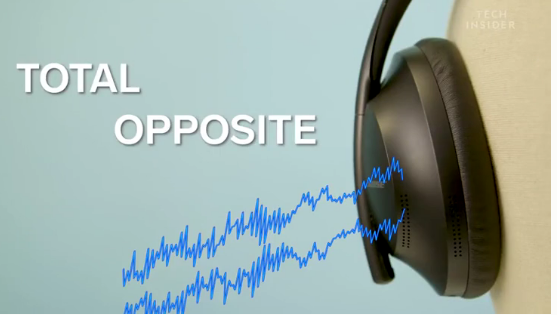Whether you’re on a plane, subway, or a crowded street, noise-canceling headphones will drown out almost everything around you. Bringing peace and quiet to your ears.
But how do they actually work? You’ve probably seen noise-canceling headphones become pretty widespread over the last decade or so.
But did you know the concept actually dates back to 1978? That’s when Dr. Amar Bose took a flight from Zurich to
Boston.
He became frustrated that the noise of the plane drowned out the music playing through the electronic headsets
on the flight.
Now, Bose’s name might sound familiar.
He is the founder of Bose audio, which has become synonymous with noise-canceling headphones. However, it would take several years and millions of dollars in research for that to happen.
Which all began on this flight. When Bose designed his first concept for noise-canceling technology, Bose’s solution was simple.
He would design headphones that listen. But it was easier said than done.
By 1986, almost 10 years after his fateful flight, Bose had a working prototype, which soon became a product for airline pilots, the military, and eventually first- and business-class customers aboard American Airlines. Eventually, once costs came down, the headphones began to become available to the general public.
And while you listen to things through the speakers, the headphones are listening as well to everything around you. See, every sound travels in the form of a wave, also called a sound wave.And each one is different.
Now, if you played both sounds at the same time, you’d get a phenomenon called constructive interference.Constructive interference amplifies sound to make the overall combination louder.
It’s the same phenomenon you get in a crowded restaurant. As more people come in and start talking,the overall sound you hear is louder.
But what if instead of becoming a louder sound, it became quieter? In fact, it became so quiet, it was almost silent.
That’s called destructive interference. And it’s exactly what our noise-canceling headphones are doing.
Let’s go back to those sound waves from before. See, sound waves, like light waves, have peaks and valleys.
Noise-canceling headphones have their own built-in microphone. And when the headphone’s microphone detects a sound wave, the headphones create a new waveform that’s the total opposite.
So, for every valley there is a peak, and for every peak, a valley. What results is the canceling part of noise-canceling.
The waves cancel each other out, and a flat line ensues. Blissful silence.
Now, if you’ve used noise-canceling headphones before, you’ve probably noticed they don’t cancel out every single noise. Some other noises leak through sometimes, like people talking loudly or cars honking.
That’s because the technology works best in environments with consistent noise. Which is why the headphones
are ideal in places like airplane cabins or train cars.
In other cases, with too much variation, matching the sound wave is tricky. It’s kind of like whack-a-mole.
You can only eliminate so many sounds at once. And some headphones will be better than others.
While a $50 pair may not eliminate noises the way a $300 set does, it may be good enough for your needs.
Even if they don’t achieve perfect silence every time, there’s no doubt noise-cancellation technology has been a useful way to help people get through their days or commutes.


